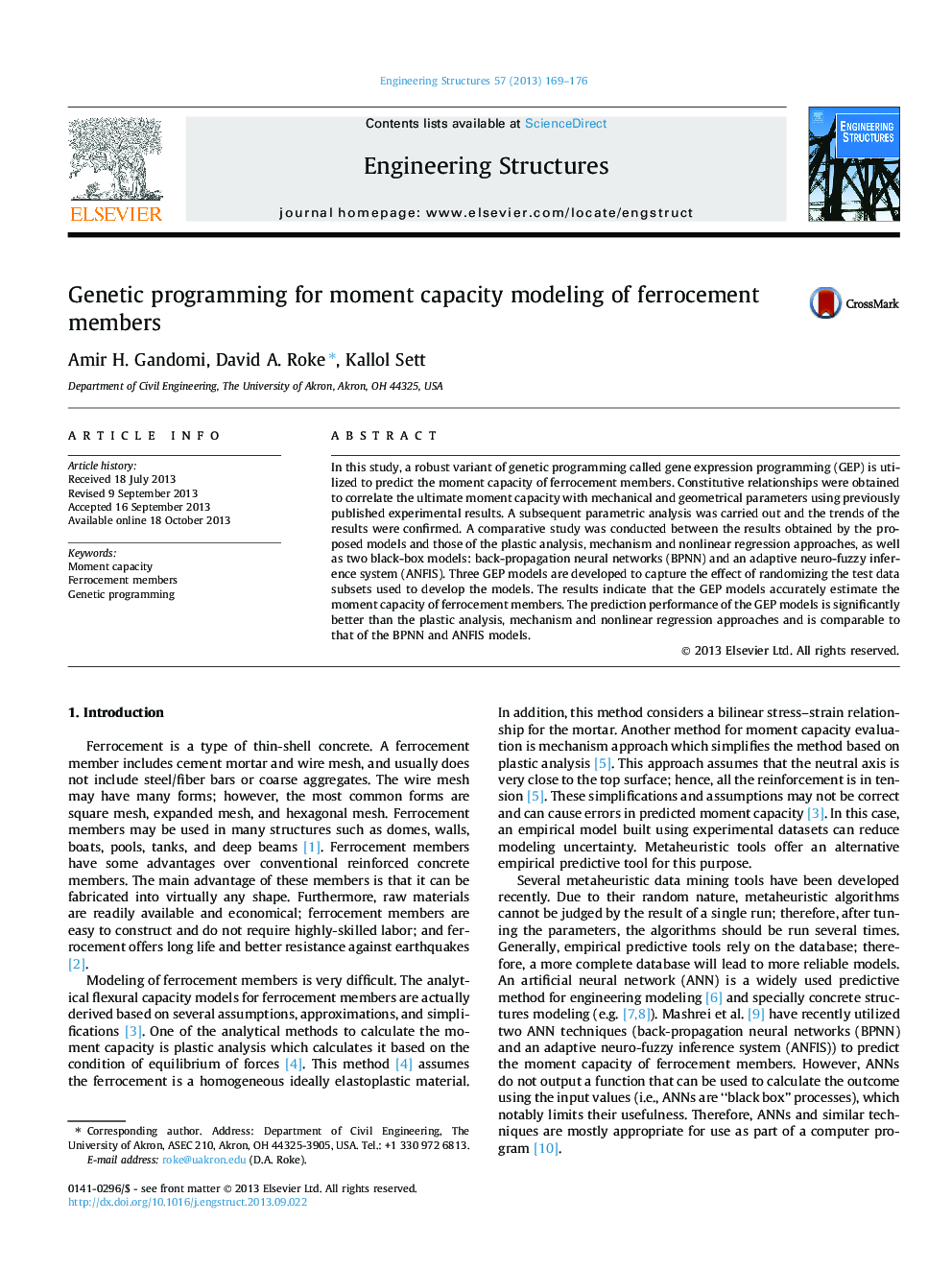| Article ID | Journal | Published Year | Pages | File Type |
|---|---|---|---|---|
| 6741064 | Engineering Structures | 2013 | 8 Pages |
Abstract
In this study, a robust variant of genetic programming called gene expression programming (GEP) is utilized to predict the moment capacity of ferrocement members. Constitutive relationships were obtained to correlate the ultimate moment capacity with mechanical and geometrical parameters using previously published experimental results. A subsequent parametric analysis was carried out and the trends of the results were confirmed. A comparative study was conducted between the results obtained by the proposed models and those of the plastic analysis, mechanism and nonlinear regression approaches, as well as two black-box models: back-propagation neural networks (BPNN) and an adaptive neuro-fuzzy inference system (ANFIS). Three GEP models are developed to capture the effect of randomizing the test data subsets used to develop the models. The results indicate that the GEP models accurately estimate the moment capacity of ferrocement members. The prediction performance of the GEP models is significantly better than the plastic analysis, mechanism and nonlinear regression approaches and is comparable to that of the BPNN and ANFIS models.
Keywords
Related Topics
Physical Sciences and Engineering
Earth and Planetary Sciences
Geotechnical Engineering and Engineering Geology
Authors
Amir H. Gandomi, David A. Roke, Kallol Sett,
